
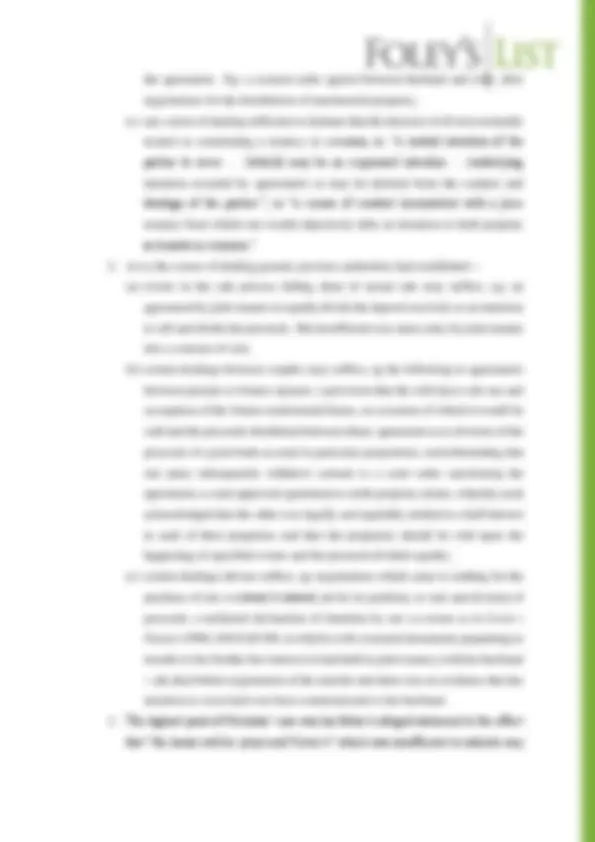
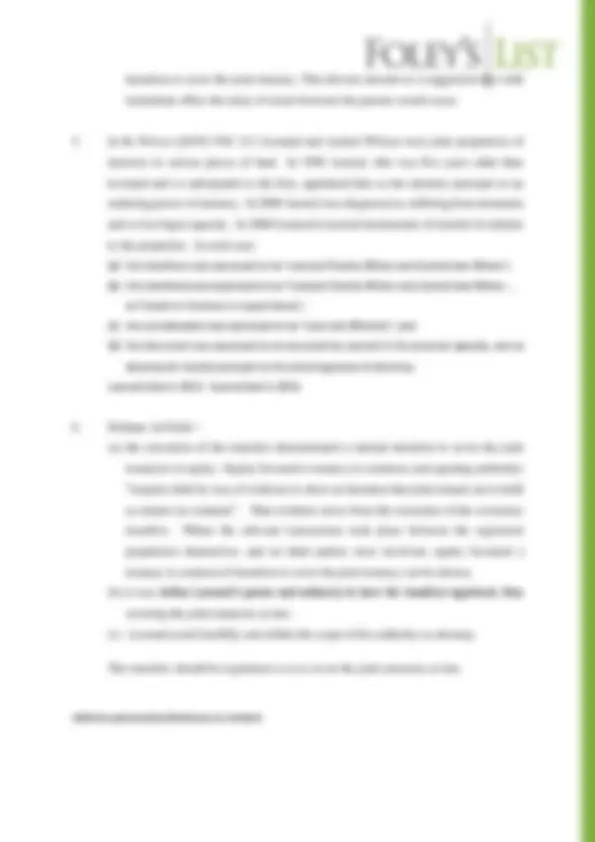
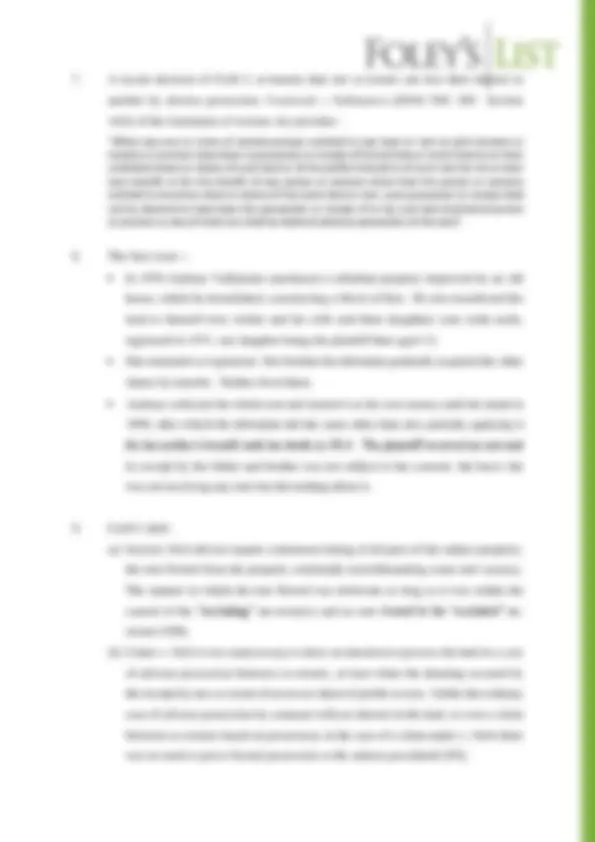
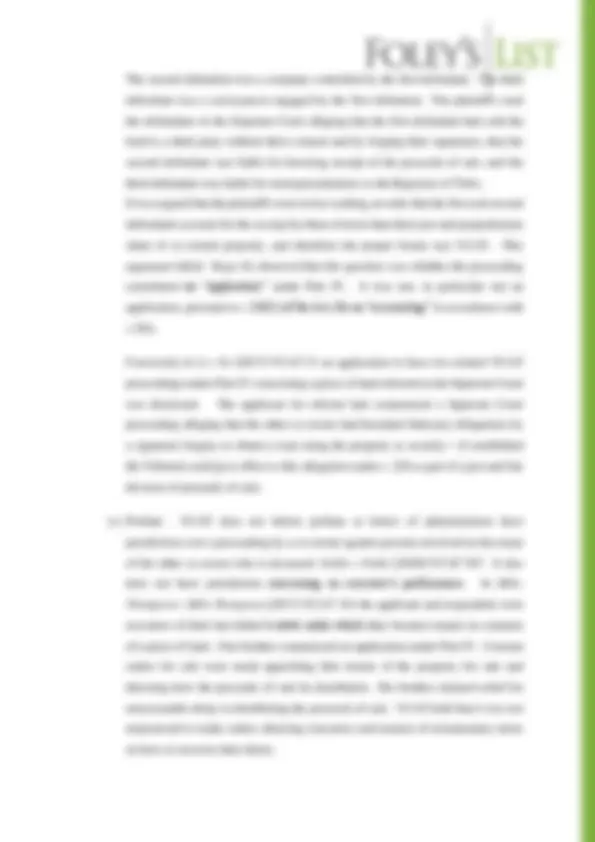
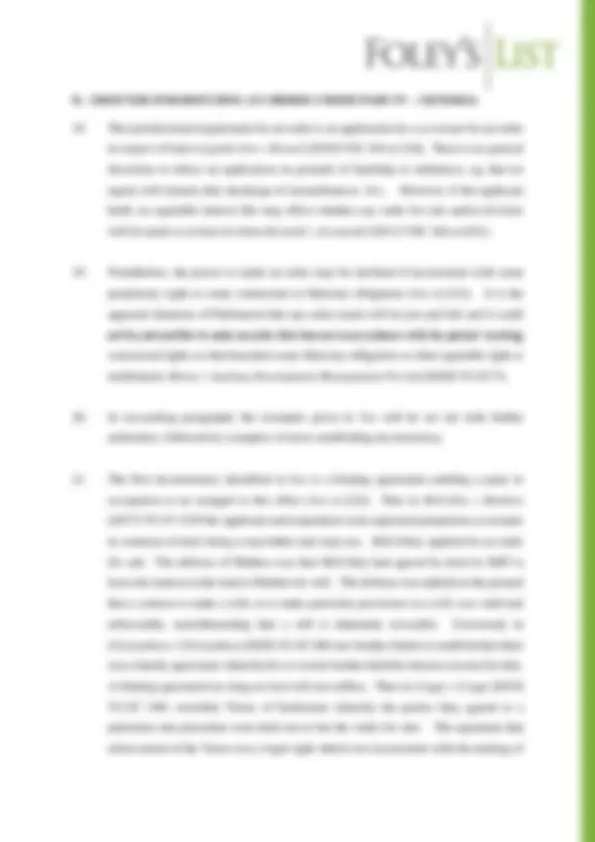
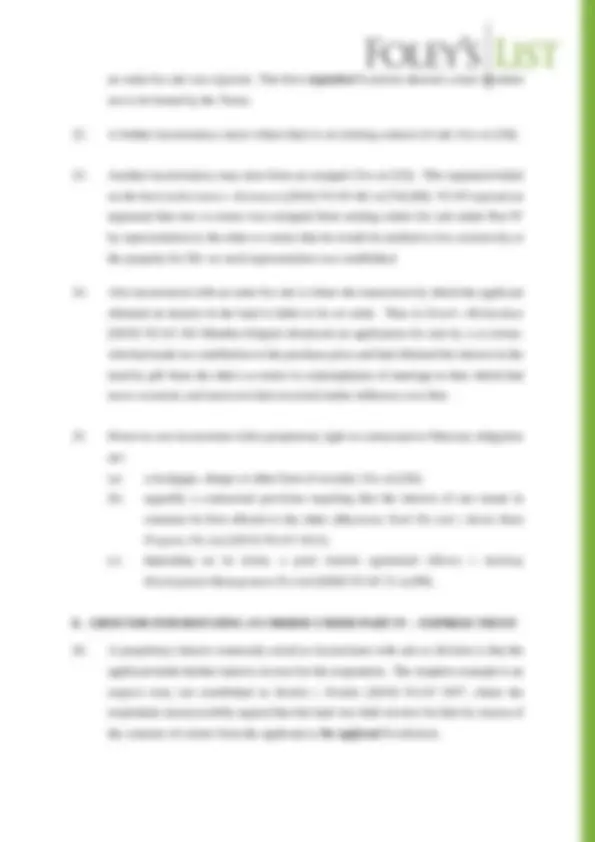
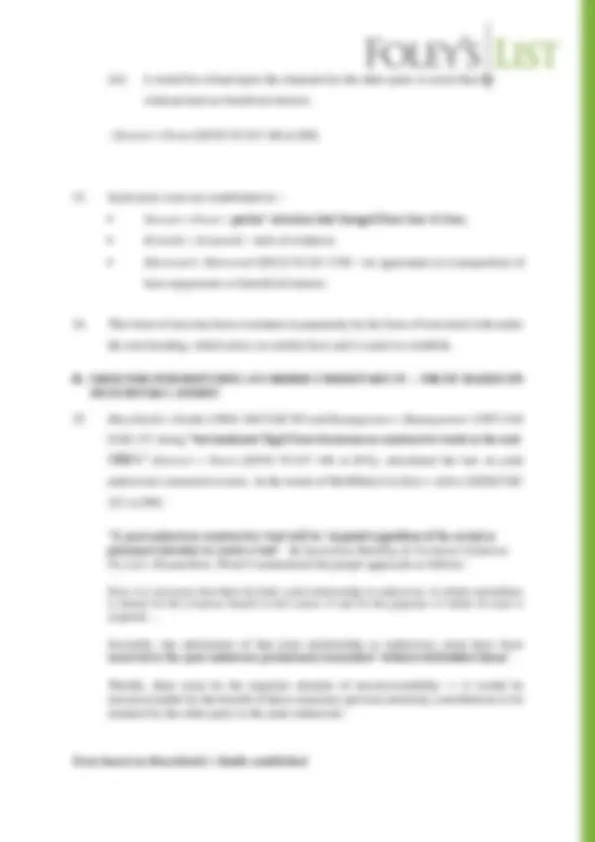
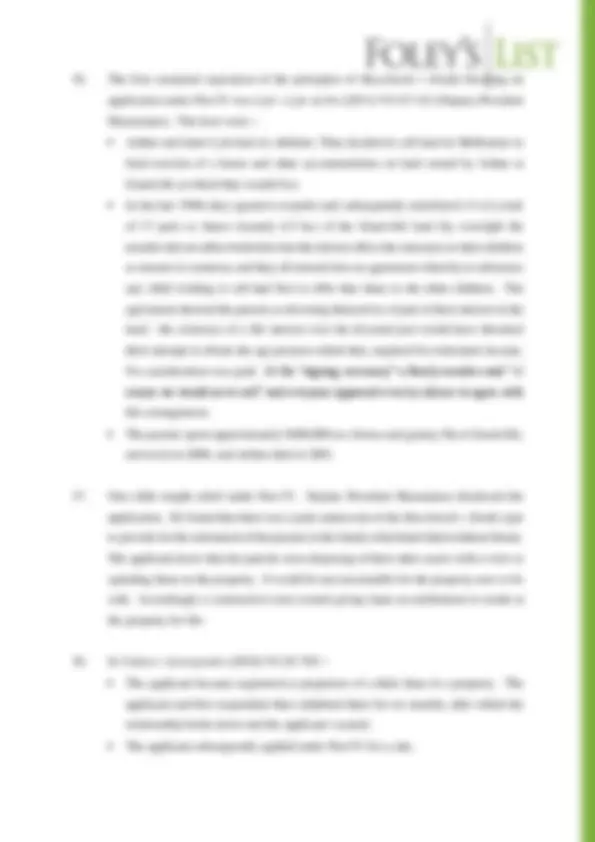
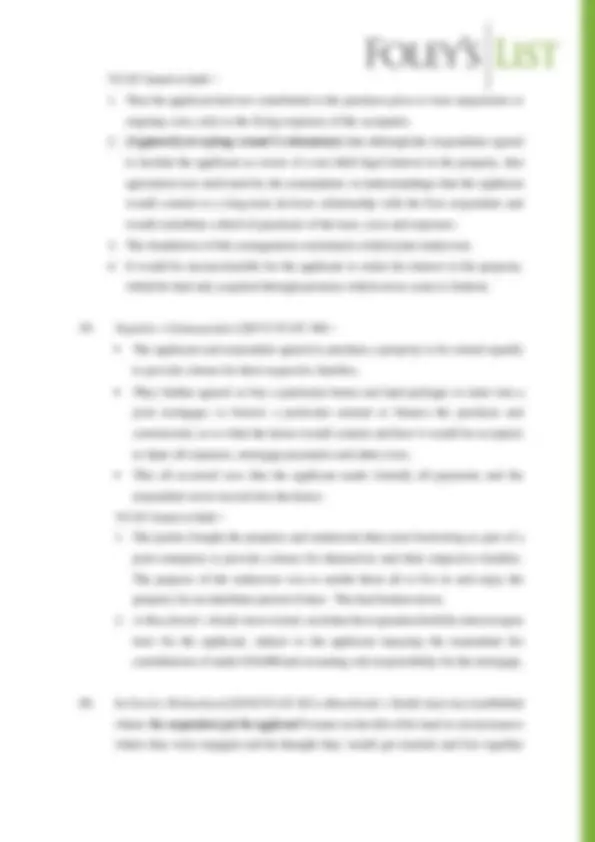
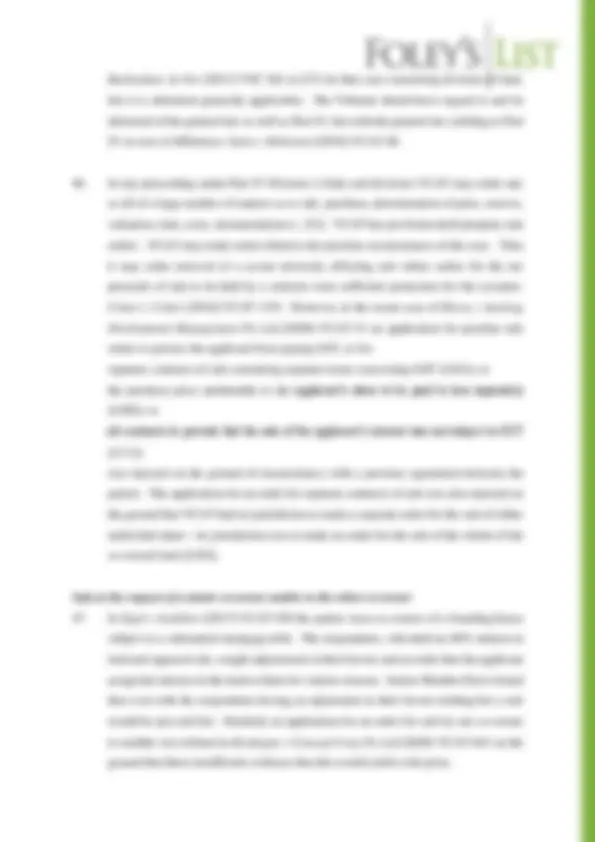
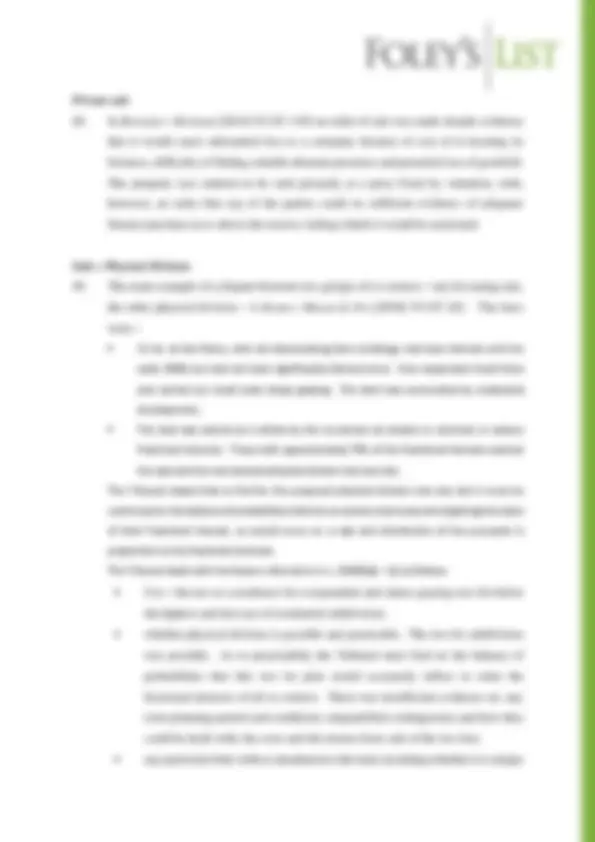
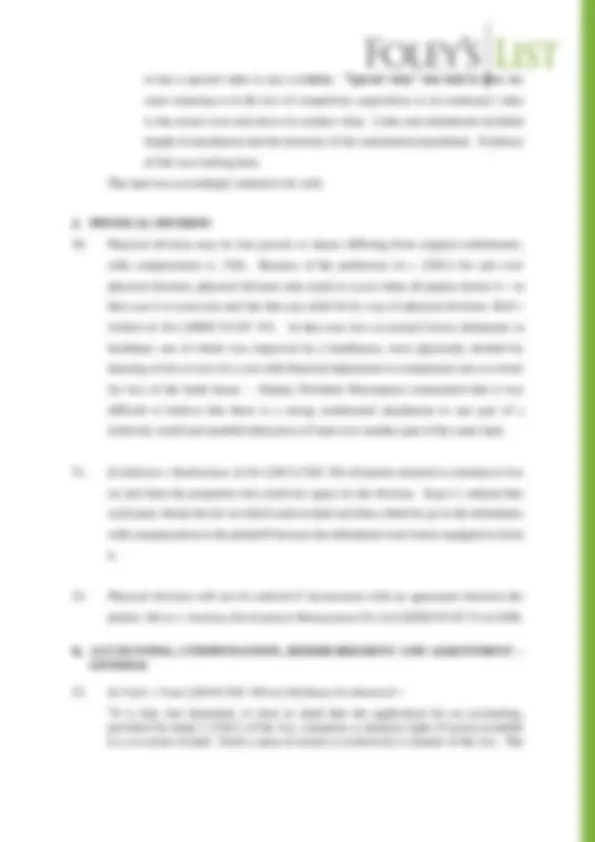
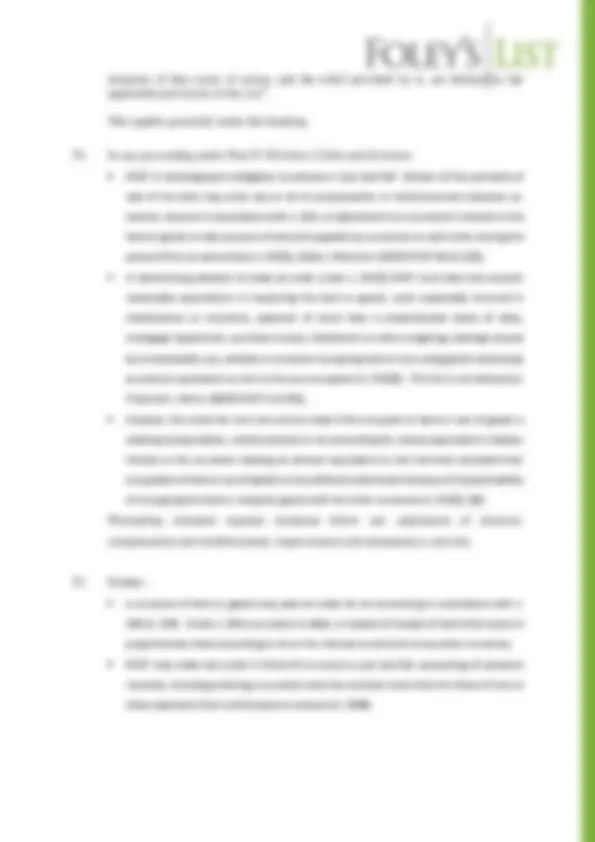
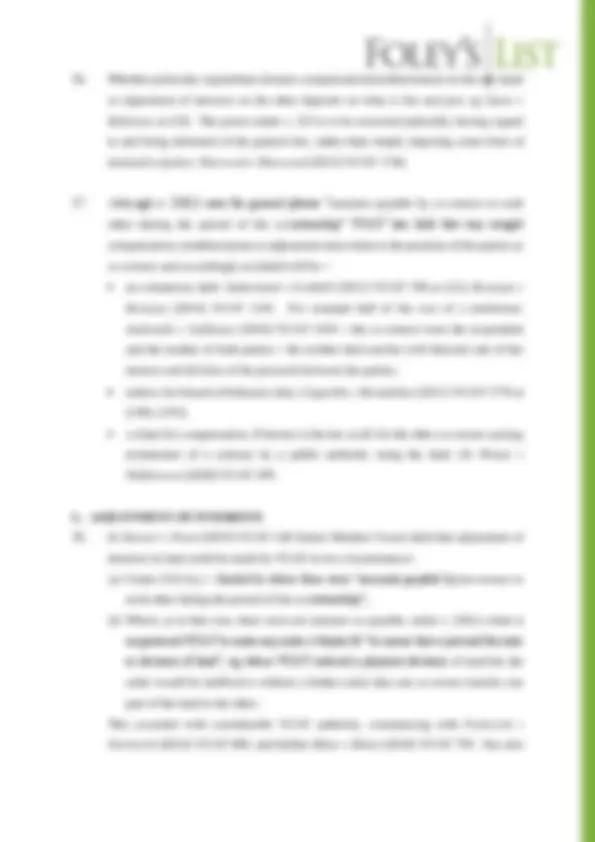
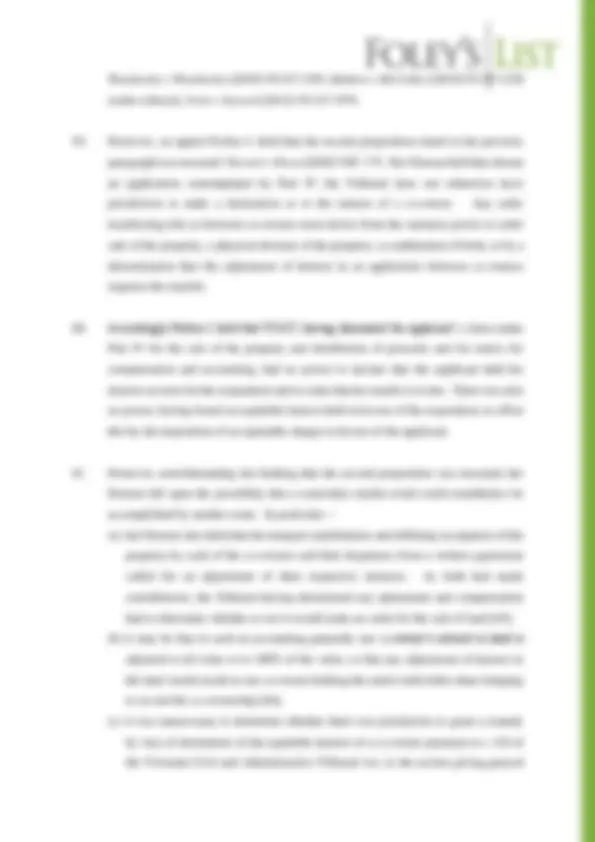
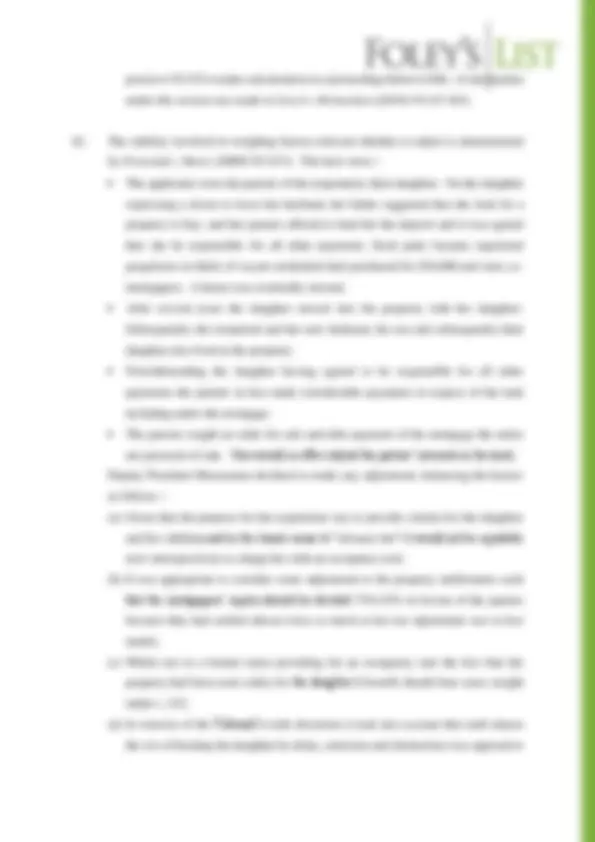
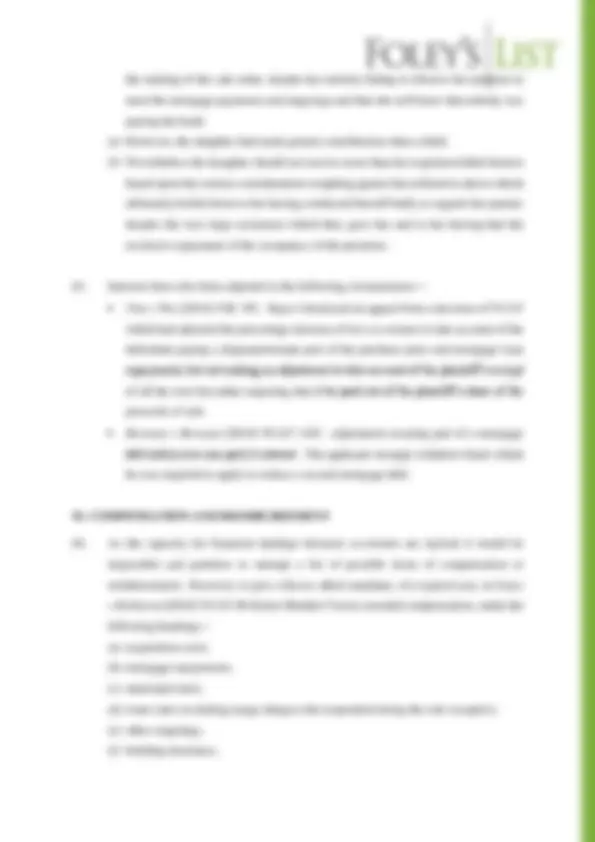
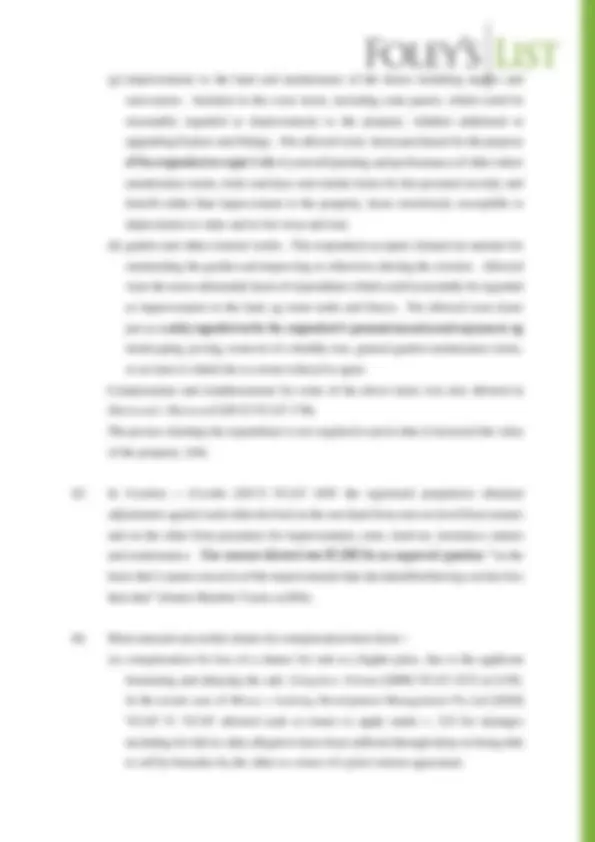
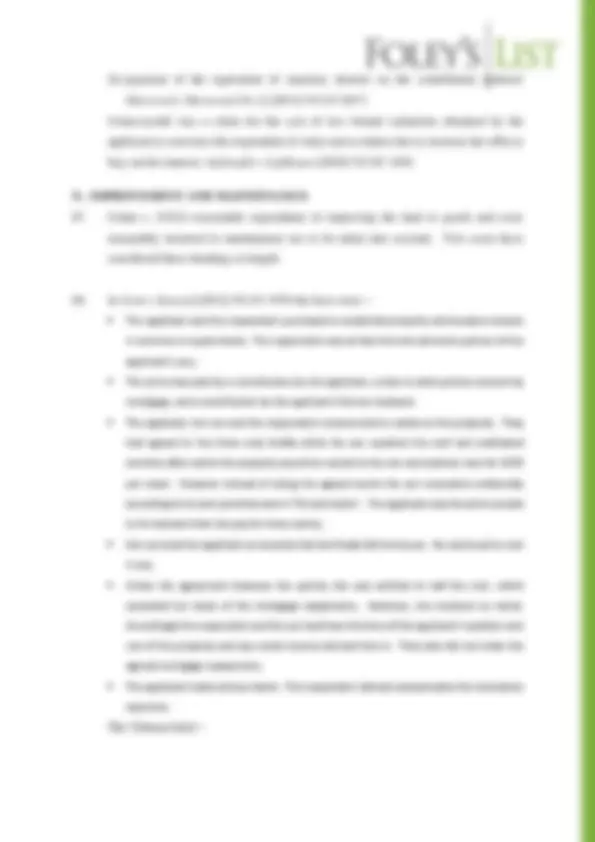
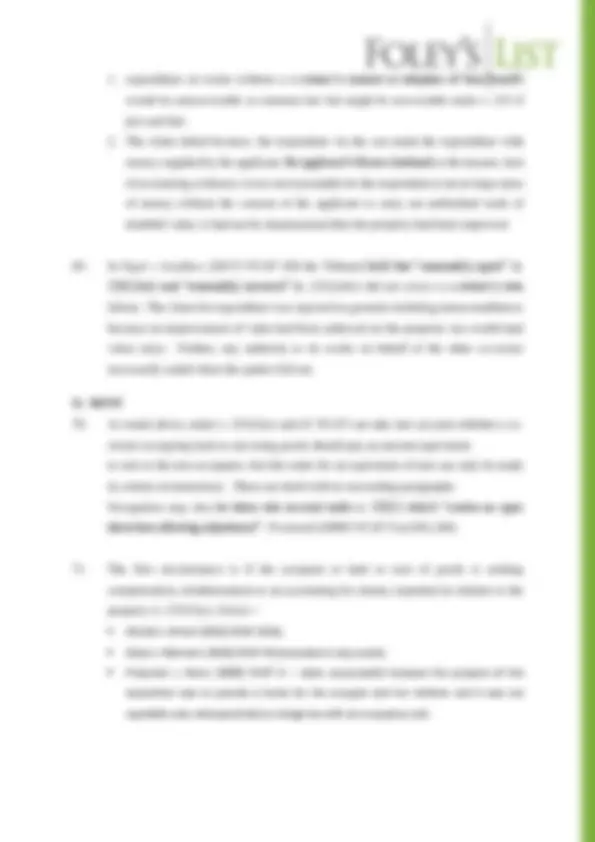
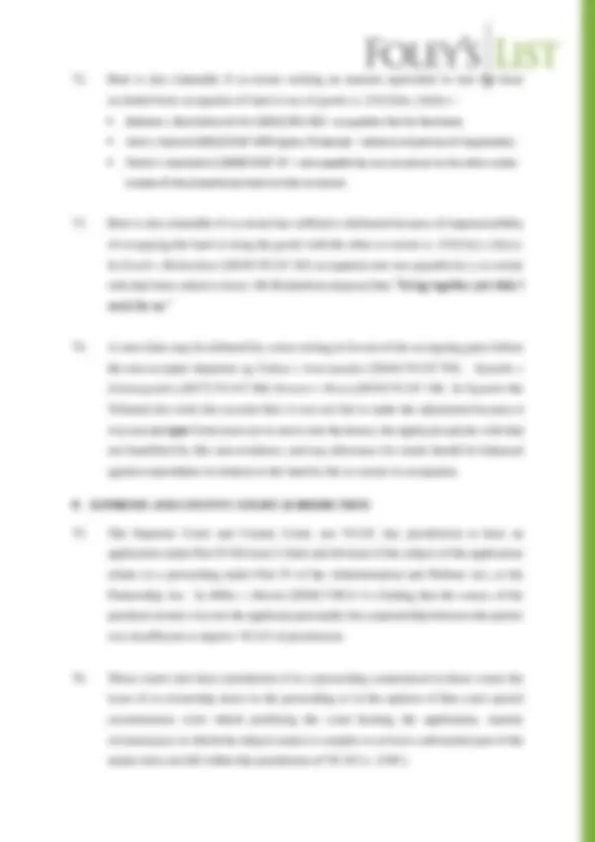
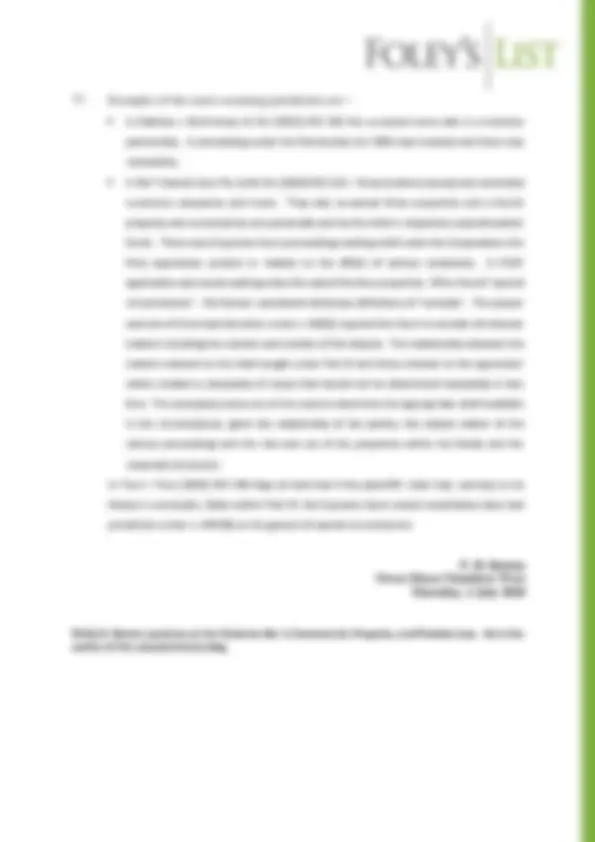


Study with the several resources on Docsity

Earn points by helping other students or get them with a premium plan


Prepare for your exams
Study with the several resources on Docsity

Earn points to download
Earn points by helping other students or get them with a premium plan
Community
Ask the community for help and clear up your study doubts
Discover the best universities in your country according to Docsity users
Free resources
Download our free guides on studying techniques, anxiety management strategies, and thesis advice from Docsity tutors
A. CO-OWNERSHIP DISPUTES OUTSIDE THE PROPERTY LAW ACT 1958. (“PLA”) PART IV. 2. The origin of this paper is the author's Law Institute ...
Typology: Schemes and Mind Maps
1 / 30

This page cannot be seen from the preview
Don't miss anything!























BY PHILIP H. BARTON BARRISTER FOLEYS LIST OWEN DIXON CHAMBERS WEST INTRODUCTION
intention to sever the joint tenancy. This did not amount to a suggestion that with immediate effect the unity of estate between the parents would cease.
The second defendant was a company controlled by the first defendant. The third defendant was a conveyancer engaged by the first defendant. The plaintiffs sued the defendants in the Supreme Court alleging that the first defendant had sold the land to a third party without their consent and by forging their signatures, that the second defendant was liable for knowing receipt of the proceeds of sale, and the third defendant was liable for misrepresentations to the Registrar of Titles. It was argued that the plaintiffs were in fact seeking an order that the first and second defendants account for the receipt by them of more than their just and proportionate share of co-owned property, and therefore the proper forum was VCAT. This argument failed. Kaye JA observed that the question was whether the proceeding constituted an “application” under Part IV. It was not: in particular not an application, pursuant to s 234(1) of the Act, for an “accounting” in accordance with s 28A. Conversely in Li v So [2017] VCAT 31 an application to have two related VCAT proceedings under Part IV concerning a piece of land referred to the Supreme Court was dismissed. The applicant for referral had commenced a Supreme Court proceeding alleging that the other co-owner had breached fiduciary obligations by a signature forgery to obtain a loan using the property as security – if established the Tribunal could give effect to this allegation under s. 228 as part of a just and fair division of proceeds of sale; (c) Probate. VCAT does not before probate or letters of administration have jurisdiction over a proceeding by a co-owner against persons involved in the estate of the other co-owner who is deceased: Noble v Noble [2020] VCAT 567. It also does not have jurisdiction concerning an executor’s performance. In Bills- Thompson v Bills-Thompson [2017] VCAT 341 the applicant and respondent were executors of their late father’s estate under which they became tenants in common of a piece of land. One brother commenced an application under Part IV. Consent orders for sale were made appointing him trustee of the property for sale and directing how the proceeds of sale be distributed. His brother claimed relief for unreasonable delay in distributing the proceeds of sale. VCAT held that it was not empowered to make orders directing executors and trustees of testamentary trusts on how to exercise their duties.
an order for sale was rejected. The first respondent’s actions showed a clear intention not to be bound by the Terms.
(iii) it would be a fraud upon the claimant for the other party to assert that the claimant had no beneficial interest. : Stewart v Owen [2019] VCAT 140 at [89].
there forever; within months of cohabitation their relationship failed without blame; it was not his intention that she should continue to enjoy the benefit of half ownership of the property once the relationship failed. It was accordingly unconscionable for her to continue to retain the benefit of her half interest in the property. Trust based on Muschinski v Dodds not established
(ii) with one exception all her work and payments for it were on her own initiative without consultation. The exception was where he was consulted and did not consent.
Private sale
or has a special value to any co-owner. “Special value” was held to have the same meaning as in the law of compulsory acquisition, ie (in summary) value to the owner over and above its market value. Links and attachment included length of attachment and the intensity of the sentimental attachment. Evidence of this was lacking here. The land was accordingly ordered to be sold. J. PHYSICAL DIVISION